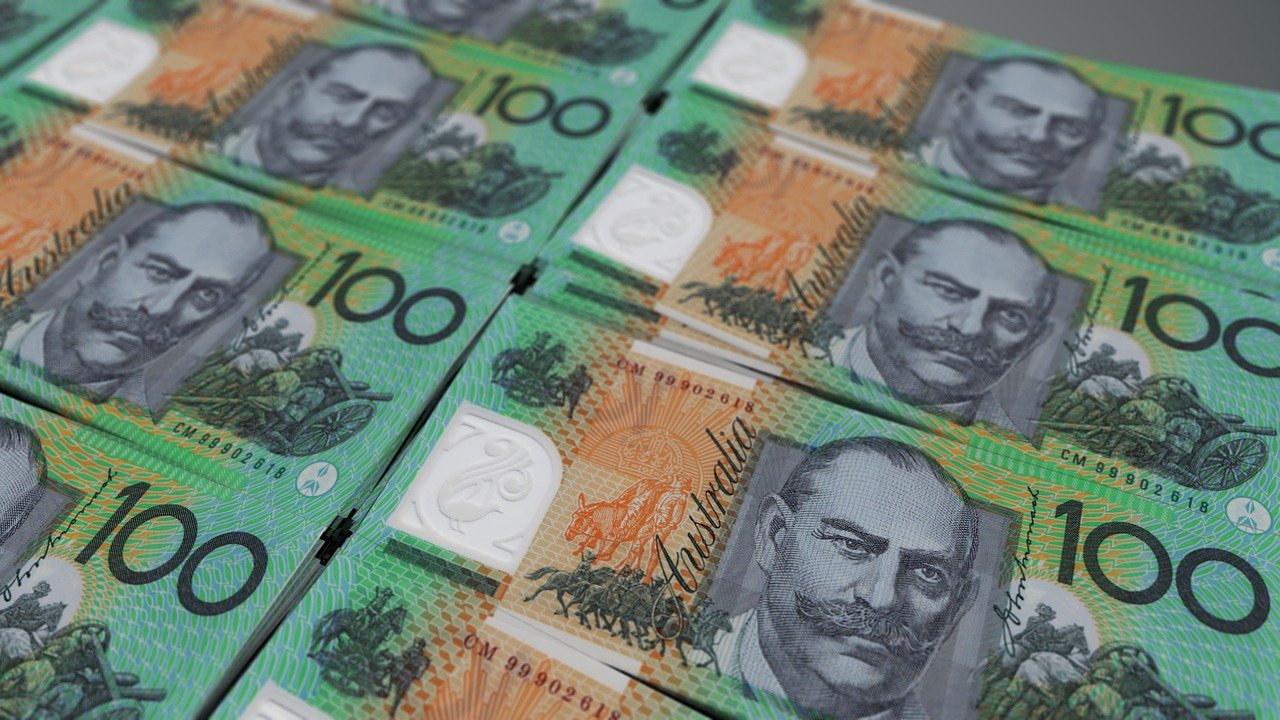Australian dollar surges from support levels as consumer confidence improves, businesses reopen, and GDP expands to 1.8% for the quarter ended March 2021.

Australian Dollar Spikes Higher towards 0.7737 Levels
The Australian dollar slipped to the 0.7650 levels towards the mid-April lows but bounced back with strength as the economy recovered with high GDP numbers. Business spending has improved, and consumer confidence is back. Lockdown restrictions are easing up, as covid cases have come down sharply.
The 200-SMA at 0.7530 provides good support to the AUD/USD. The better than expected figure in the GDP brings the AUD/USD back to the resistance level at 0.7737.
The risk-sensitive currency was trading within a small range between 0.7725 and 0.7790 towards the end of May. The Australian dollar to the greenback slipped to 0.7663 levels on June 3 but bounced back with good economic data as the economy recovers.
Australia fell into a recession after three decades, with the pandemic lockdown affecting economic activity, but in 2021 the outlook has changed.
Australia’s First Quarter GDP Expands to 1.8% in Australia
The Australian Bureau of Statistics (ABS) data shows that the economy has expanded by 1.8% for the quarter ended March 2021, better than expectations. The GDP for the previous quarter ended December 2020 was at 3.2%. GDP growth is better than expectations estimated at 1.5%.
The Australian economy is back at pre-pandemic levels, becoming one of the few countries to do so. The GDP of leading countries like the United Kingdom, the United States, and the European Union, are still below pre-pandemic levels. However, in Australia, GDP numbers have gone up as businesses reopen after the lockdown.
Australian economic activity has improved after the pandemic lockdown. The economy has expanded faster than the forecast level for the first quarter of 2021. Investments and household spending have contributed to the economic expansion. Private investment has contributed to the GDP growth by 0.9%.
The Australian government pumped around AUD 2 trillion into the economy to control the pandemic and uplift consumers and businesses. The big stimulus package helped citizens during the period of lockdown and social distancing.
RBA Governor Philip Lowe expects the GDP to grow by 4.75% in 2021 and 3.5% in 2022.
Lockdown Restrictions Lifted as Infection Cases Decline in Australia
The lockdown forced businesses to close, leaving many unemployed. Restaurants and cafes had to down shutters. However, welfare schemes helped the unemployed to tide over these tough moments. Infection rates and death tolls had affected the health of the economy. Though most parts of Australia have eased down lockdown curbs, restrictions continue in other areas. In Melbourne and various south-eastern regions, lockdown restrictions continue.
The vaccination drive has been slow and much below the expected pace. Only vaccination can control the significant outbreak of the virus, say experts. Almost 20% of adults in Australia have received their first vaccination dose. Once the vaccination drive picks up, business activities are expected to pick up.
There is economic recovery as the Covid pandemic comes under control. Consumer spending has improved, and hiring has increased by companies. The economy has recovered better than expectations, with the pandemic brought under control. Growth is at pre-pandemic levels.
The Australian government fears the new virus strain affecting India. The new strain was detected among two Australians, and they are under strict observation.
Interest Rates Remains Unchanged to Lift Australian Dollar
The central government keeps interest rates unchanged at the June meeting. The economy is recovering, but inflation and wages have to recover.
Interest rates are at record lows of 0.1%. But the government states that it has no intention of raising rates until inflation comes to levels at 2%. The Reserve Bank of Australia held a dovish policy outlook, with the economy moving to a pre-pandemic level. The interest rate hike is unlikely to happen, at least until 2024, says Lowe.
RBA governor Philip Lowe hints at more stimulus to help the economy towards faster growth. The country brought in quantitative easing worth $200 billion of government bond purchases. It has helped to bring liquidity into the economy, says Lowe. Borrowing costs will remain lower with the bond purchase. Further stimulus measures in July are expected from the central bank to inject more stimulus measures into the economy.
Weaker US Dollar Index Uplifts Australian Dollar
The US 10-year Treasury yields fell to 1.62%, weakening the greenback. Employment numbers are getting better, and analysts expect the addition of about 1 million jobs.
The weakening greenback has benefited the Australian dollar. The US dollar index has bounced back towards the psychological mark at 90.00, though it continues to show less strength. The greenback has to remain consistently above the 90.10 levels to show its positive upwards move.
The AUD/JPY currency pair remains range-bound, as it remains strong, at multi-year high levels at 84.71.
The AUD/NZD currency pair is at 1.0728 levels. It has recovered from the sharp decline of last week. Prime Minister Jacinda Ardern has stated that the economy of New Zealand outperforms that of Australia. The low unemployment rate has helped the economy perform better, says the Prime Minister.